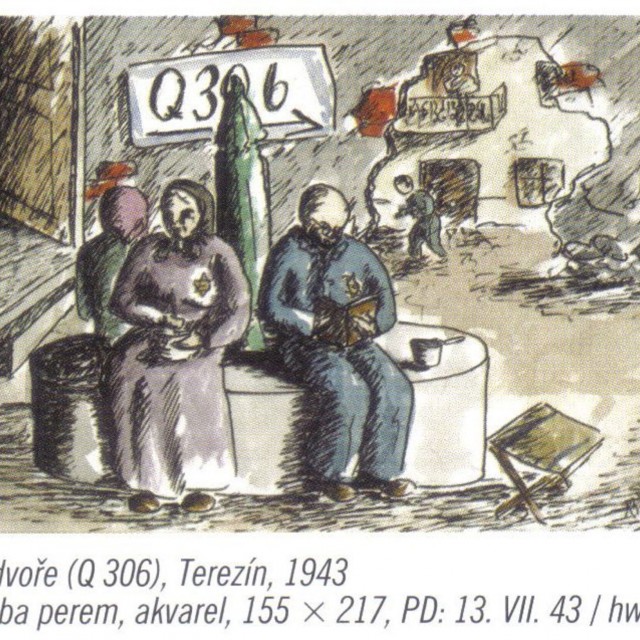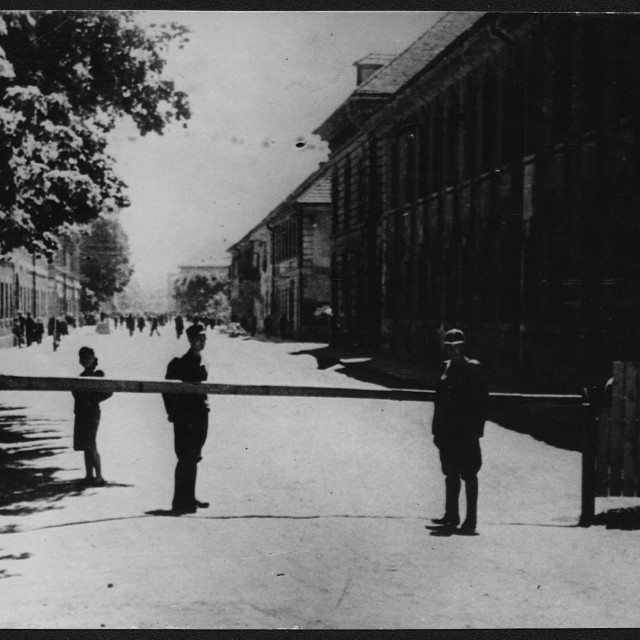Motýli tady nežijí
Kreslení bylo jednou z mála aktivit, které děti v Terezíně měly povolené. Některé proto s tužkou strávily mnoho času. Patřila mezi ně i třináctiletá Helga Weissová, později Hošková. „Řada kreseb vznikla pod vedením malířky Friedl Dicker-Brandeisové, původem z Rakouska, která po anšlusu utekla do Čech a zde se provdala. Kresby ukládala, ani jsme nevěděli kam,“ vzpomíná pamětnice. „Po válce, když se likvidovalo ghetto, se našly na půdě jednoho dětského domova asi dva kufry a v nich kolem pěti tisíc kreseb. Dnes jsou v majetku židovského muzea a ve světě jsou známy pod názvem Motýli tady nežijí.“ Titul této sbírky kreseb byl inspirován básní jednoho židovského chlapce, která vznikla v Terezíně a končí slovy: „Motýla jsem tu neviděl. Motýli tady nežijí, v ghettu.“ Helga Weissová díky obrázkům udržovala spojení s rodiči, kteří byli umístěni v jiné části terezínské pevnosti. „Hned na začátku, když jsme si mohli s tatínkem jen posílat psaníčka, jsem mu poslala naivní dětskou kresbičku sněhuláka. A tatínek mi tenkrát odpověděl: ,Maluj, co vidíš.‘ Tak jsem začala malovat každodenní život v Terezíně. Byla jsem tam téměř tři roky a nakreslila více než sto kreseb. A zachytila jsem opravdu každodenní život v ghettu. Kresby jsou dnes velmi vzácné, protože je to jeden z mála obrazových dokumentů z Terezína. Navíc je kreslilo dítě, jsou srozumitelné a čitelné. Vyšly v knize, která se jmenuje podle tatínkových slov Maluj, co vidíš.“
Hodnocení
Hodnotilo 0 lidí
Routes
Not a part of any route.
Comments
No comments yet.









